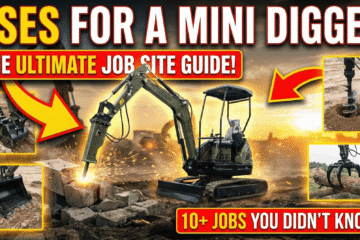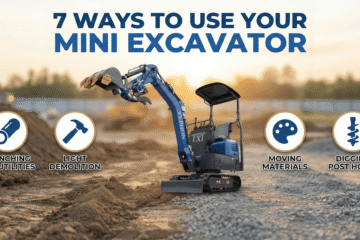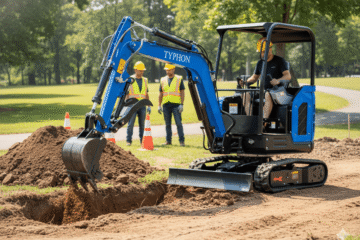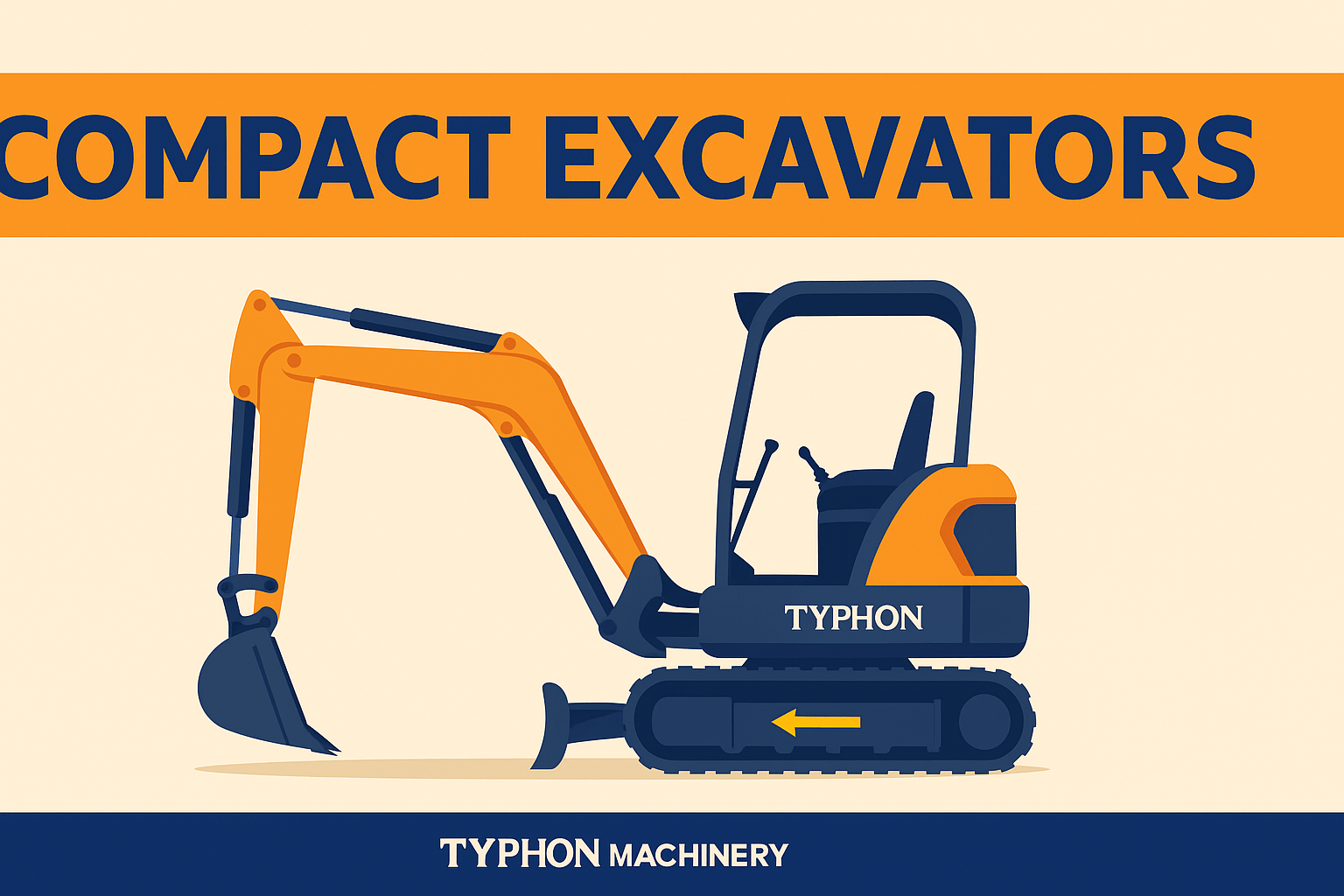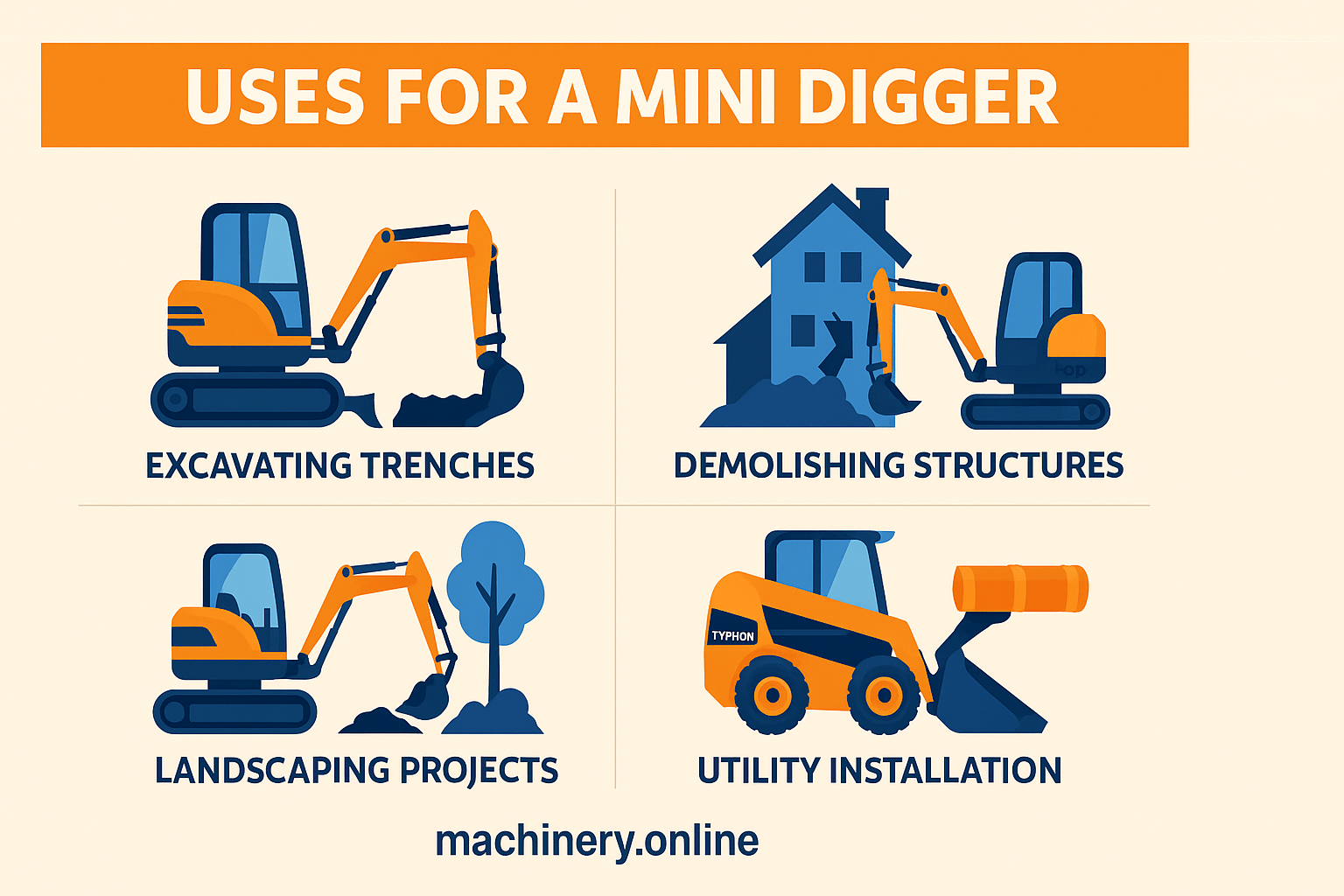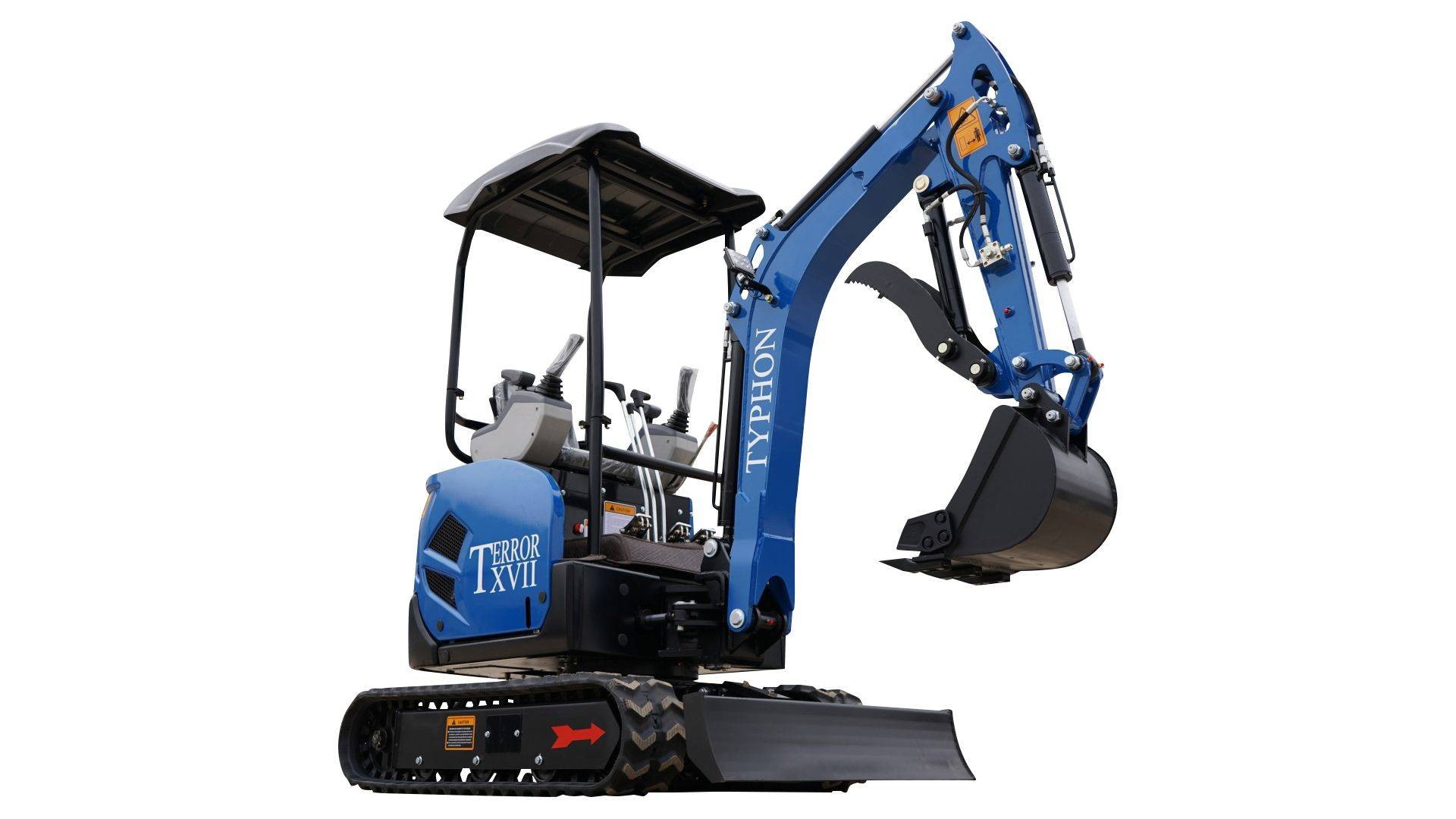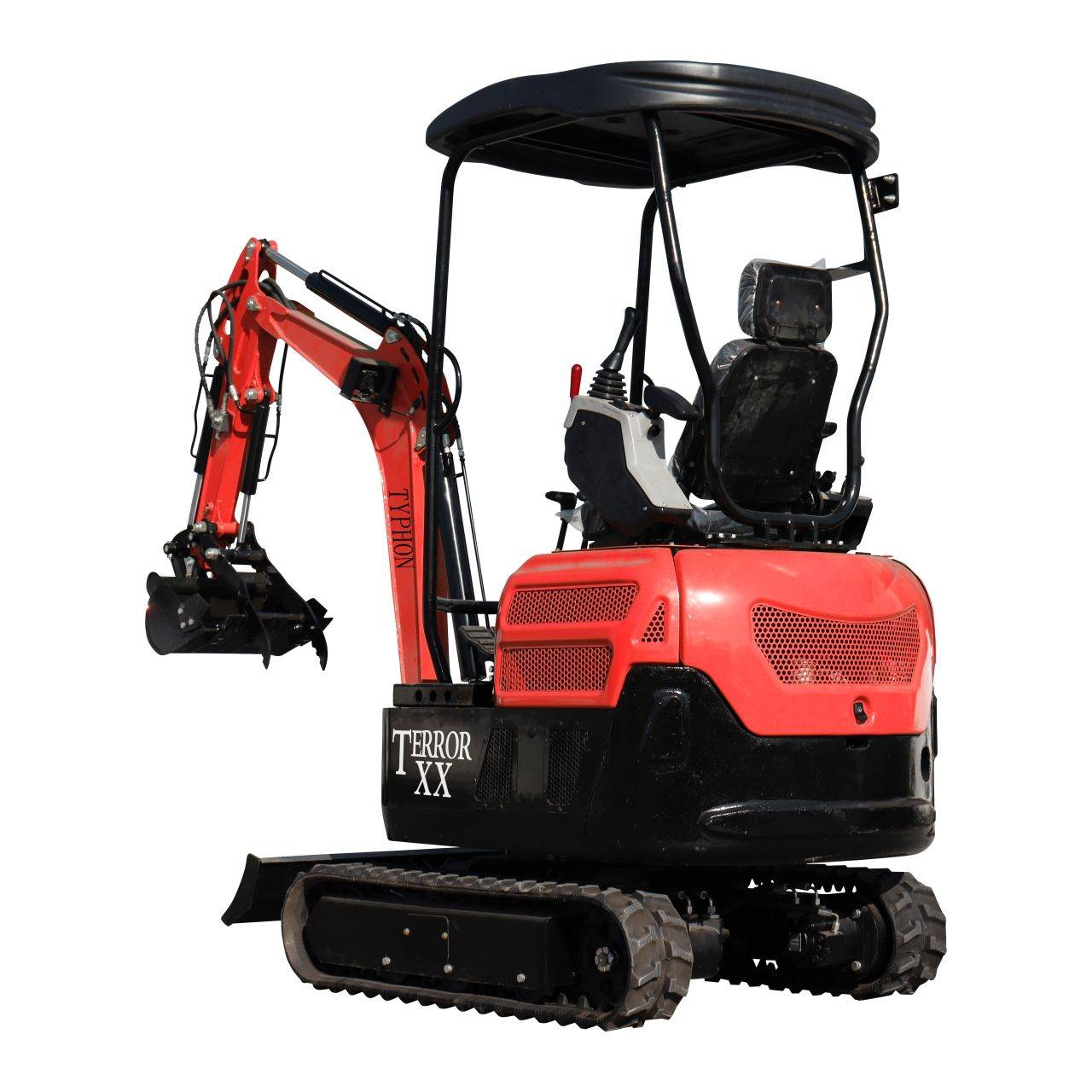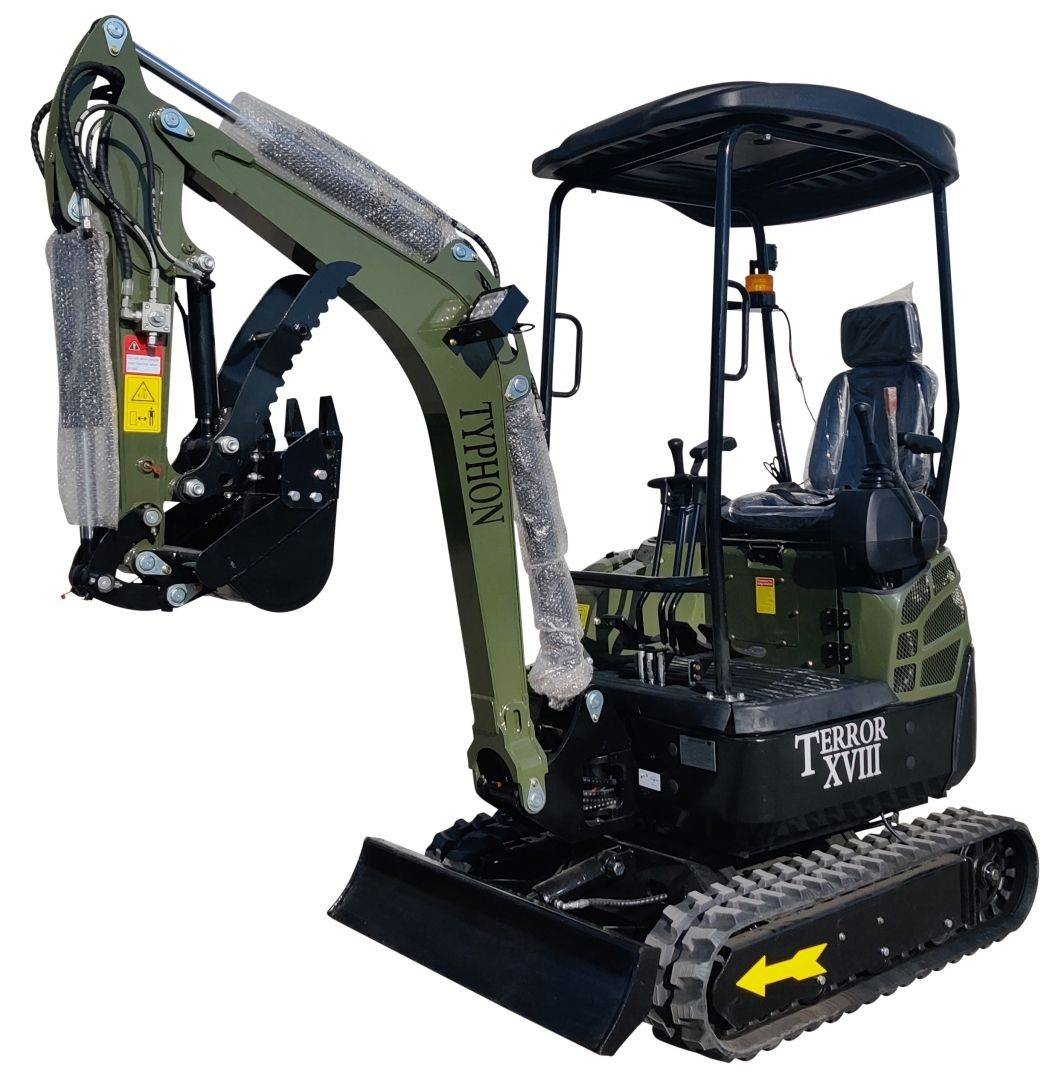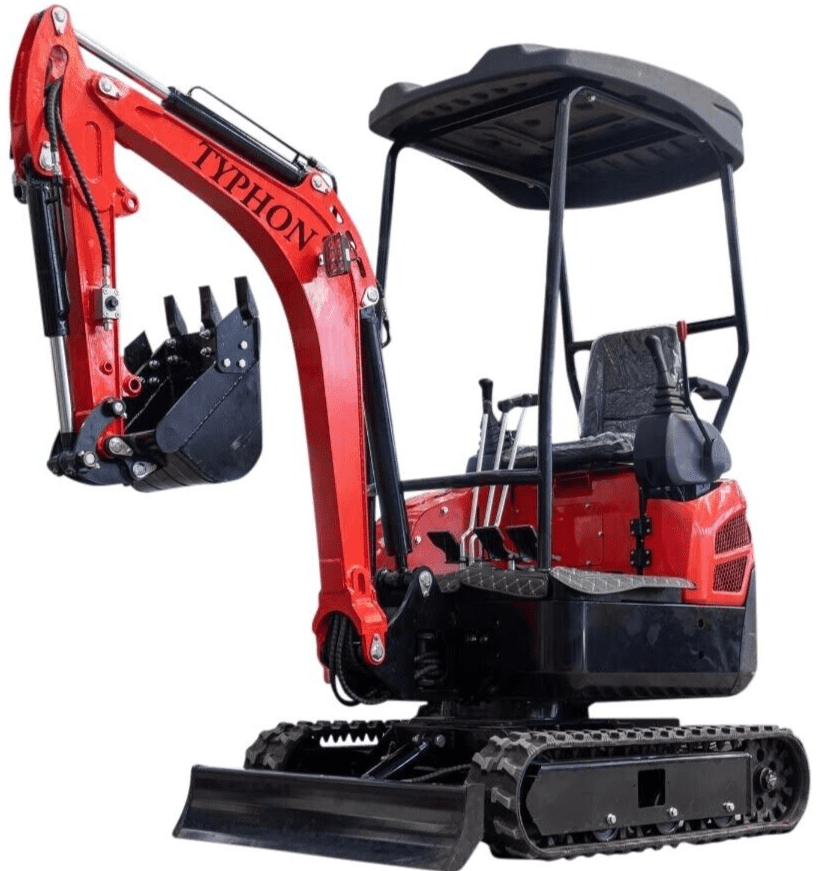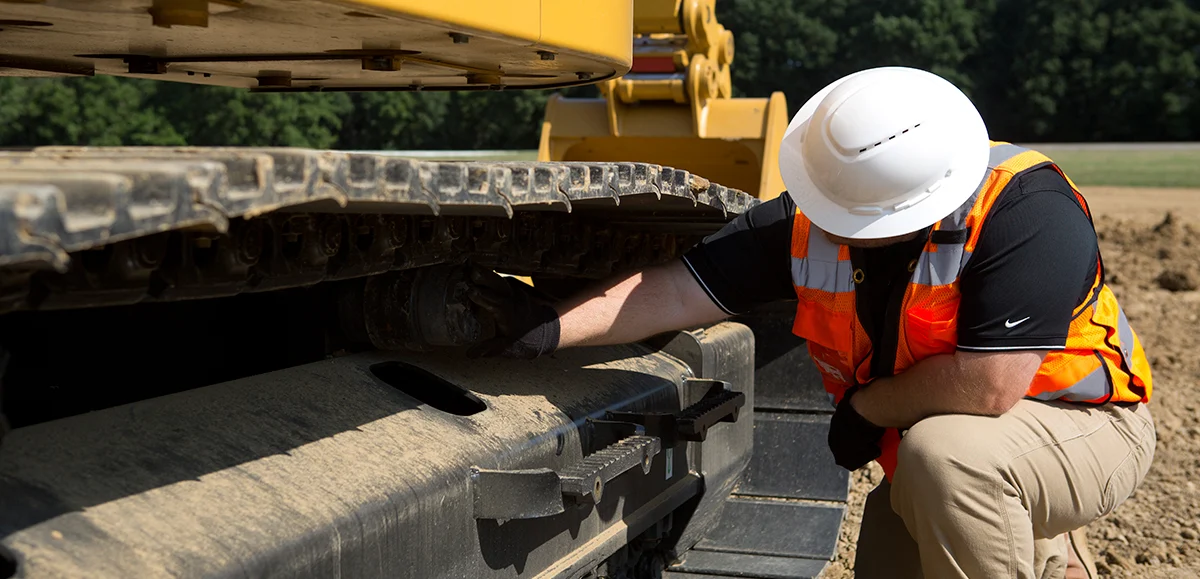
Proper Excavator Maintenance for Optimal Performance and Longevity
Maintaining an excavator is crucial to ensuring it performs optimally and has a long operational life. Regular maintenance can identify and address minor issues before they escalate into major problems, reducing the risk of breakdowns and costly repairs. This also ensures efficient operation, enhancing productivity on construction sites and minimizing downtime. Routine tasks like lubrication, filter replacements, and component inspections help maximize the lifespan and reliability of excavators.
Understanding Key Components of an Excavator
Several key components in an excavator require regular maintenance to ensure smooth and efficient operation:
Engine
The engine is the powerhouse of the excavator. Regular maintenance includes oil and filter changes, fuel system inspections, and monitoring coolant levels. Proper engine maintenance ensures optimal performance, fuel efficiency, and reliability.
Hydraulic System
The hydraulic system controls the movement of the excavator’s arm, boom, and bucket. It relies on hydraulic fluid, filters, pumps, and valves. Regular maintenance involves checking hydraulic fluid levels, inspecting hoses and seals for leaks, and replacing filters. This ensures precise and responsive control, preventing issues like jerky movements and loss of power.
Undercarriage
The undercarriage, consisting of tracks, sprockets, rollers, and idlers, is the foundation of the excavator. Regular maintenance includes cleaning, lubrication, and inspection for wear and tear. Proper undercarriage maintenance maximizes traction, stability, and overall maneuverability.
Bucket
The bucket is used for digging and loading materials and is subject to wear and tear. Regular maintenance involves inspecting for damage, checking tooth condition, and repairing or replacing worn components. Maintaining the bucket ensures efficient digging and loading operations.
Each of these components plays a vital role in the overall operation of an excavator. Proper maintenance of these components ensures optimal functionality, improving productivity, safety, and extending the excavator’s lifespan.
Daily Excavator Maintenance Checks
Daily maintenance checks are essential to identify potential issues early, ensuring safe and efficient operation. These checks help prevent equipment breakdowns and costly repairs, prolonging the excavator’s lifespan and maintaining its resale value.
Daily Checklist
- Fluid Levels: Check engine oil, hydraulic fluid, coolant, and fuel levels to maintain optimal performance and prevent damage.
- Leaks: Inspect for fluid leaks, which can indicate damaged hoses, seals, or fittings.
- Undercarriage: Inspect components like tracks, rollers, idlers, and sprockets for wear, loose bolts, or damage.
- Filters: Check and clean or replace air filters, hydraulic filters, and fuel filters as needed.
- Belts and Hoses: Inspect for wear, cracks, or leaks, and replace damaged components promptly.
- Lights and Signals: Test all lights, signals, and alarms for proper functioning.
- Controls and Safety Devices: Ensure all controls, joysticks, pedals, and safety devices are in good working condition.
- Bucket and Attachments: Inspect for damage, wear, or loose connections, and ensure bucket teeth are secure and sharp.
- Greasing: Lubricate specified grease points to prevent excessive wear and maintain smooth movement.
- Documentation: Check the operator’s manual, maintenance log, or other relevant documentation for specific daily checks or tasks.
Performing these daily maintenance checks ensures the excavator is in optimal condition for safe and efficient operation throughout the workday.
Periodic Excavator Maintenance (Preventive Maintenance Plan)
Periodic maintenance tasks go beyond daily checks and include various activities to ensure long-term reliability and performance.
Common Periodic Maintenance Procedures
- Filter Changes: Inspect and replace air filters, hydraulic filters, and fuel filters every 250 to 500 operating hours or as specified by the manual.
- Lubrication: Grease joints, bearings, and pivot points every 50 to 100 operating hours or as recommended by the manufacturer.
- Wear Parts Replacement: Regularly inspect and replace attachments like bucket teeth, cutting edges, and wear plates based on wear levels or manufacturer guidelines.
- Fluid Changes: Perform fluid changes for engine oil, hydraulic fluid, and coolant every 250 to 500 operating hours for oil, and every 1,000 to 2,000 hours for hydraulic fluid and coolant.
- Component Inspections: Inspect belts, hoses, seals, electrical connections, and safety devices every 250 to 500 operating hours for signs of wear or potential failures.
- Track and Undercarriage Maintenance: Clean debris, inspect track tension, and replace worn or damaged components every 250 to 1,000 operating hours.
Adhering to these maintenance schedules ensures the excavator operates at its best, minimizes unexpected breakdowns, and extends the lifespan of the equipment.
Learn More: Leading Brands in Mini and Compact Excavators: A Comparative Overview
Proper Cleaning and Storage of Excavators
Cleaning and proper storage are crucial to prevent corrosion, damage, and other issues that can affect performance and longevity.
Tips for Proper Cleaning
- Use Gentle Cleaning Agents: Avoid harsh chemicals that may damage the paint or corrode metal surfaces. Use mild detergents or specialized cleaning products.
- Start with a Rinse: Use a hose or pressure washer to rinse off loose dirt, mud, and debris before applying cleaning agents.
- Undercarriage Cleaning: Use a high-pressure washer or manual cleaning to remove debris from the undercarriage, preventing premature wear.
- Clean Attachments Separately: Detach and clean attachments separately to ensure thorough cleaning and prevent cross-contamination.
- Use Soft Brushes and Cloths: Use soft brushes or cloths to avoid scratching surfaces and pay attention to hard-to-reach areas.
- Dry Thoroughly: After cleaning, dry the excavator thoroughly to prevent moisture accumulation and corrosion.
Tips for Proper Storage
- Choose a Suitable Location: Store the excavator in a dry, covered area away from direct sunlight, rain, or extreme temperatures.
- Lower Attachments to the Ground: Relieve stress on hydraulic cylinders by lowering the bucket and other attachments.
- Secure the Excavator: Engage the parking brake and use wheel chocks or track blocks to prevent unintended movement.
- Lubricate and Protect Surfaces: Apply rust-preventive lubricant on exposed metal surfaces.
- Disconnect Batteries: If storing for an extended period, disconnect the batteries to prevent drain and damage.
- Follow Manufacturer Guidelines: Always refer to the manufacturer’s recommendations for specific cleaning and storage instructions.
By incorporating regular cleaning and proper storage practices, you can protect the excavator from corrosion, damage, and other issues, ensuring its longevity and reliable performance.
Keeping Maintenance Records
Keeping comprehensive maintenance records is crucial for several reasons:
- Maintenance History: Provides a detailed history of all maintenance activities, helping track performed tasks and identify recurring issues.
- Warranty and Service Contracts: Required for validating warranty claims or service contracts.
- Resale Value: Enhances the excavator’s resale value by demonstrating proper care and maintenance.
Creating a Maintenance Log
- Choose a Format: Decide on a digital or physical format for the maintenance log.
- Include Relevant Information: Record all essential details, including the date, type of maintenance, tasks completed, parts replaced, and observations.
- Follow a Consistent Structure: Use a standardized format for consistency.
- Be Specific and Detailed: Provide detailed descriptions of maintenance tasks and observations.
- Regularly Update the Log: Update the log promptly after each maintenance task.
- Store and Protect the Log: Keep the log in a safe and easily accessible location.
- Review and Analyze: Periodically review the log to identify patterns or trends and optimize maintenance plans.
By maintaining comprehensive records, you have a valuable tool for tracking maintenance activities, ensuring compliance with warranty requirements, and enhancing overall management.
Dealing with Common Excavator Maintenance Issues
Hydraulic System Leaks
- Signs: Puddles of hydraulic fluid, decreased performance, or unusual noises.
- Solution: Inspect the hydraulic system, tighten fittings, or replace damaged seals. Seek professional assistance if the leak is substantial or difficult to determine.
Electrical Issues
- Signs: Erratic behavior, failure of electrical systems, or blown fuses.
- Solution: Check for loose connections, damaged wires, or corroded terminals. Consult a professional electrician or service center for complex issues.
Engine Performance Problems
- Signs: Rough idling, loss of power, excessive smoke, or difficulty starting.
- Solution: Inspect air filters, fuel lines, and fluid levels. Clean or replace filters as necessary. Involve a qualified mechanic for persistent issues.
Track or Undercarriage Problems
- Signs: Abnormal noises, uneven wear, or difficulty tracking straight.
- Solution: Inspect track shoes, rollers, and idlers for damage or wear. Tighten or replace components as needed. Seek professional assistance for extensive repairs.
Component Wear or Failure
- Signs: Wear and tear on bucket teeth, cutting edges, or hydraulic seals.
- Solution: Monitor wear parts and replace them when necessary. For major components, involve trained technicians or the manufacturer’s service personnel.
Learn More: Construction equipment – Remote control and retrofit
Proper excavator maintenance is essential for optimal performance and longevity. By following regular maintenance schedules, performing daily and periodic checks, and addressing common issues promptly, you can ensure your excavator remains reliable, efficient, and safe for all your construction needs.


